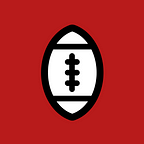How Do NFL Teams Miss on QB Evaluations?
QB Scouting Misses
Let me start by saying this is a broader critique of how scouting in most sports continues to overweight size/strength/athletic attributes versus heart/competitiveness/past performance.
If you look at the top 5 QB’s over the past 20 years — the list would undoubtedly include Tom Brady (6th round), Peyton Manning (#1 overall), and Patrick Mahomes (3rd QB selected in his draft), and possibly include Drew Brees (2nd round), Aaron Rodgers (late 1st round pick), Lamar Jackson (last pick in 1st round), Russell Wilson (3rd round), and Ben Roethlisberger (mid 1st round). If we isolate that top group of likely, only Manning was his draft’s top QB selected, and for many, they weren’t in the top 2 or 3. Furthermore, when you isolate why a guy falls into the retrospective redraft, it typically comes down to 2 factors — a perceived lack of size and athletic ability.
In the case of Tom Brady, Drew Brees, and Russell Wilson, there was an assumption that they lacked a crucial component ever to be “great”, even though in each of their cases, they had played outstanding football at a power five school, in 2 of the three instances they were excellent multiple year starters for teams that they pushed to new heights.
So why do scouts get this wrong so often?
The primary reason is they undervalue leadership, performance, not just statistics but team performance, and put too much emphasis on physical ability.
Brock Purdy is an example.
Brock Purdy (7th round, Mr. Irrelevant) compares favorably when you look at the core considerations of all great NFL quarterbacks, he’s not short or small; he elevated the play of his college team and demonstrated he was great across multiple seasons. So let’s compare him versus Kyler Murray (#1 overall), Sam Bradford (#1 overall), Jared Goff (#1 overall) and Mitchell Trubisky (#3 overall). By the way, I could include Jameis Winston, JaMarcus Russell, Blake Bortles, Vince Young, and many other top overall pick QBs in their respective drafts. But you’ll get the point that there are a lot of misses.
Size
Every top QB selected in the draft since 2000 has been either a prototypical size (6’4” 220+ pounds) or is an electric athlete (e.g., Michael Vick & Kyler Murray). The exception to this was Baker Mayfield who was the same size as Brock Purdy and a below-average athlete. In fact if you look at the biggest busts in the top 15 of NFL drafts at all positions, it’s overvaluing size — as the biggest busts were all prototypical height weight and had strong arms.
Winning Team Performance
The Misses
- Baker Mayfield was 38–8 across 1 season at Texas Tech and 3 seasons at Oklahoma. He won the Heisman in 2017. His teams were great, NFL talent and he led them to 3 straight New Year’s day bowl games.
- Kyler Murray was 14–3 across 1+ starting seasons at Texas A&M and Oklahoma. He won the Heisman in 2018 as well.
- Sam Bradford was 23–7 across 2+ seasons as a starter at Oklahoma.
- Jared Goff was 14–23 across four seasons as a starter at the University of California.
- Mitchell Trubisky was 8–5 across 1 season as a starter at UNC.
The Ones NFL Scouts “Missed”
- Tom Brady was 20–5 across 2 seasons as starter at Michigan, he was selected in the 6th round, behind 6 other QB’s in the 2000 NFL draft.
- Jalen Hurts was insane, playing 56 games, won a national title and went 51–5 in those games. He started his career at Alabama for 3 years and Oklahoma 1 season. Hurts was selected in the 2nd round, the 5th overall QB selected in 2020.
- Russell Wilson was 31–19 across 4 seasons at NC State (3 years) & Wisconsin (1 year). Wilson was selected in the 3rd round of his draft.
- Brock Purdy was 29–17 across 4 seasons as starter at Iowa State, he also led them to 4 straight winning seasons, something the school hadn’t accomplished since 1922–1927. He was the last pick in the 2022 NFL draft (7th round).
- Kirk Cousins was 28–12 across 3 seasons as starter at Michigan State, leading them to back to back New Year’s day games. He lasted until the 4th round, and was just the 2nd QB selected by his NFL team in the 2012 draft.
Purdy’s won-not remarkable until you look at ttended, and their record prior to his arrival,and after he left. Furthermore, there is a correlation between and NFL performance, though no definitive study. A 2020 study by Lewis Jones (link here), found that the greater number of starts resulted in at least some NFL productivity and value.
So the question remains, why do scouts not consider the level of competition, the quantity of play, and the results they engineered more when drafting quarterbacks?
They overestimate size and arm strength and undervalue performance, particularly for quarterbacks who reset culture at tier 2 power five schools. Tom Brady, for instance, wasn’t as successful as his predecessor, and though he had the size, there were perceived physical limitations. Jalen Hurts was too small and perceived a lack of arm talent (even though he had exceeded the size and performance of his two Oklahoma predecessors in Mayfield & Murray), and Russell Wilson was too short and lacked arm strength. Purdy is a kind crossover, more akin to Russell Wilson and Kirk Cousins, as he’s not small (nearly 6’1 and 220 pounds), but he mainly played in obscurity at Iowa State and fell through the perceived scouting cracks. Plenty of people still think he’s just a game manager and system quarterback, but he’s in rarified air already as a Super Bowl starting QB who has won 4 playoff games in his first two seasons, leading 3 come-from-behind victories in the process.
